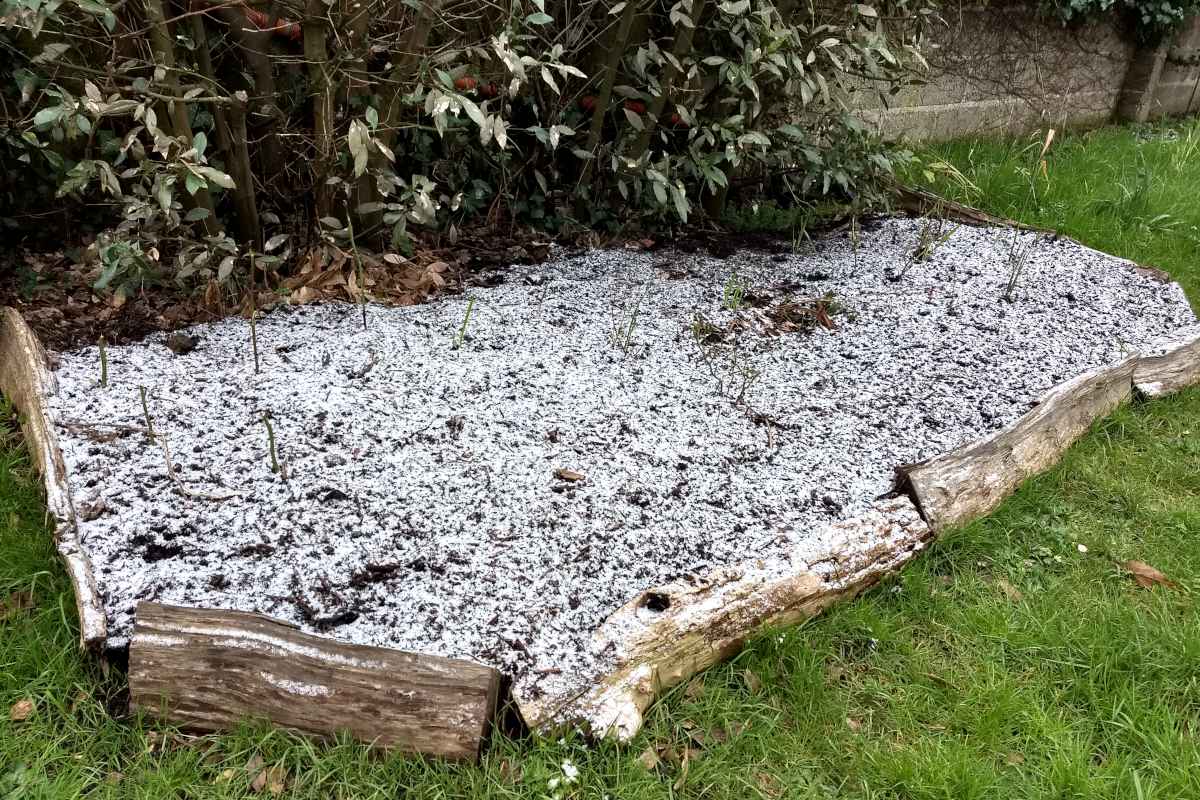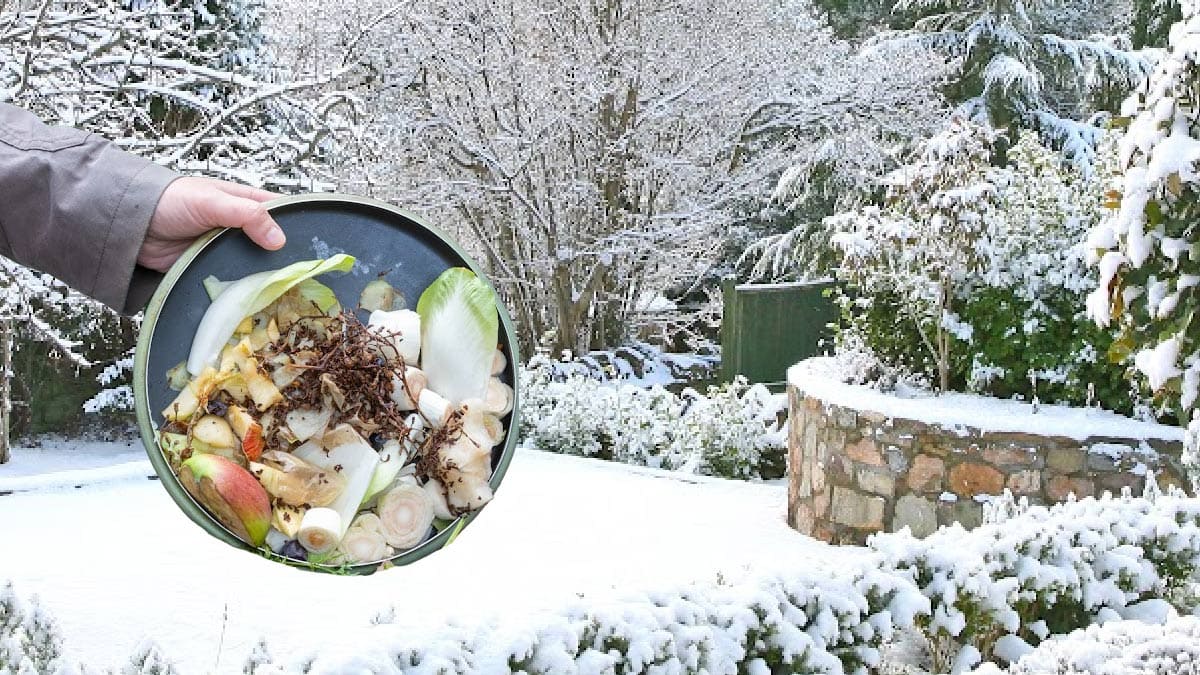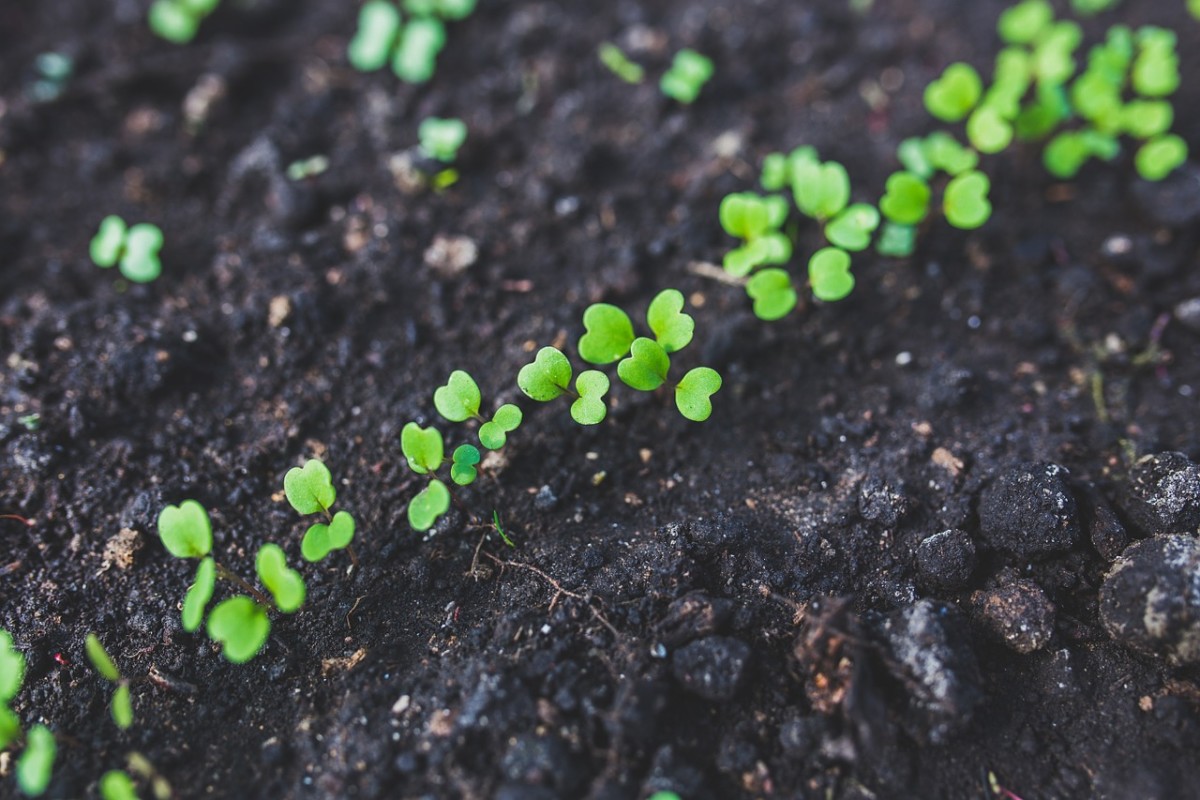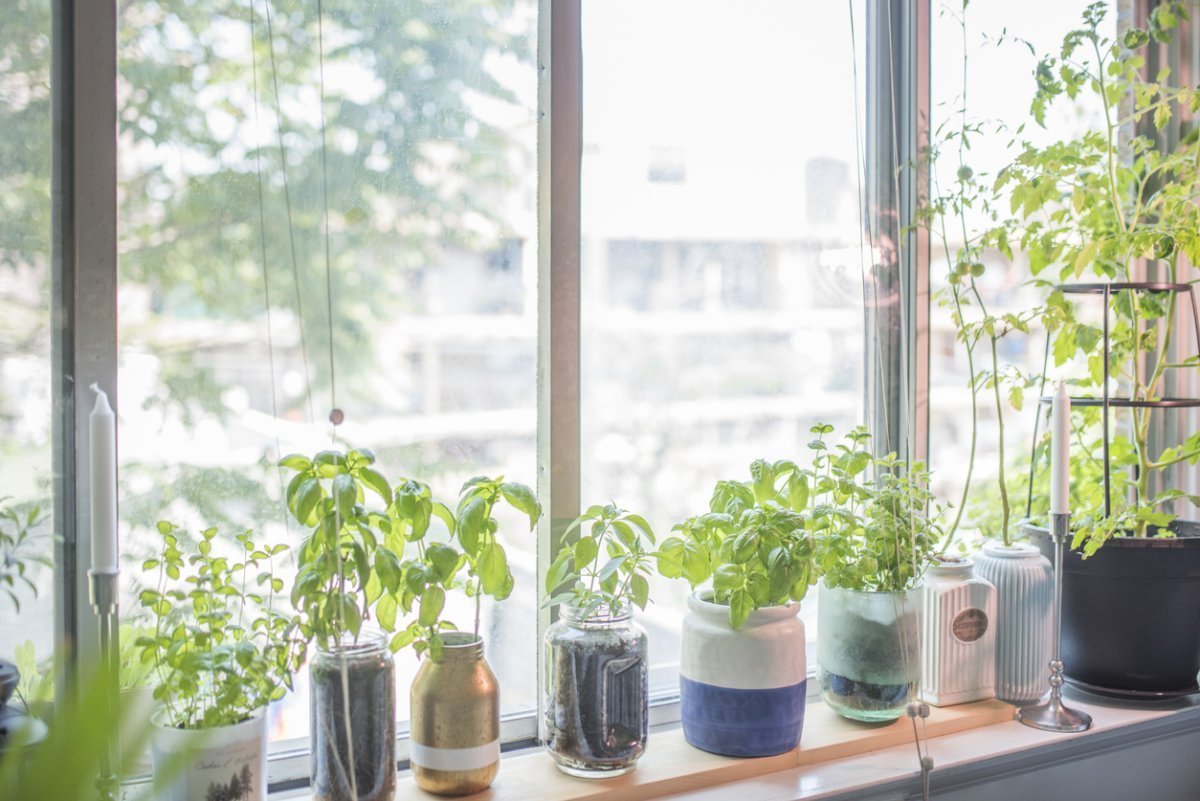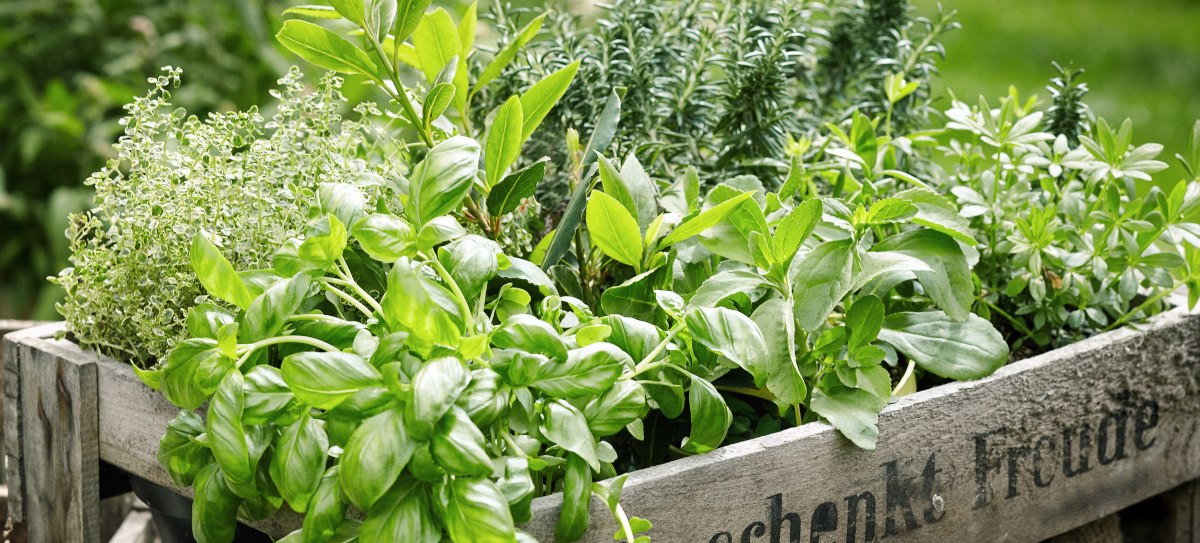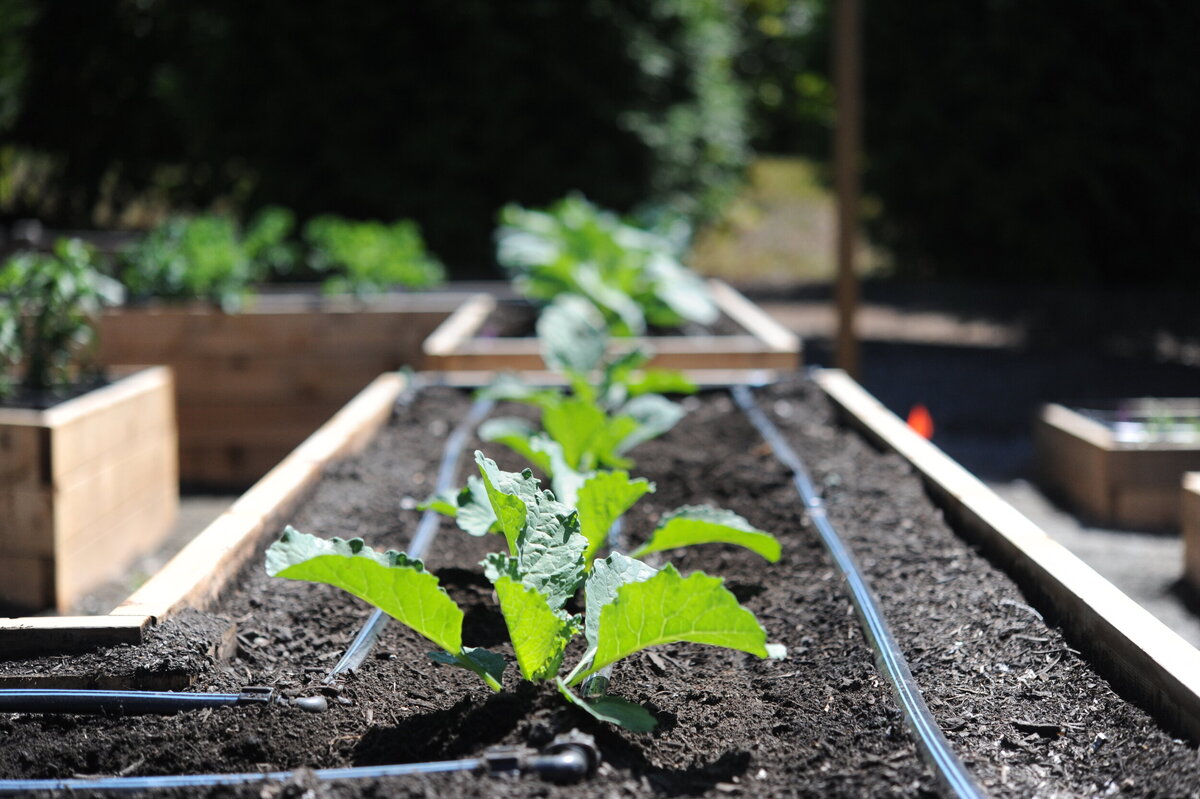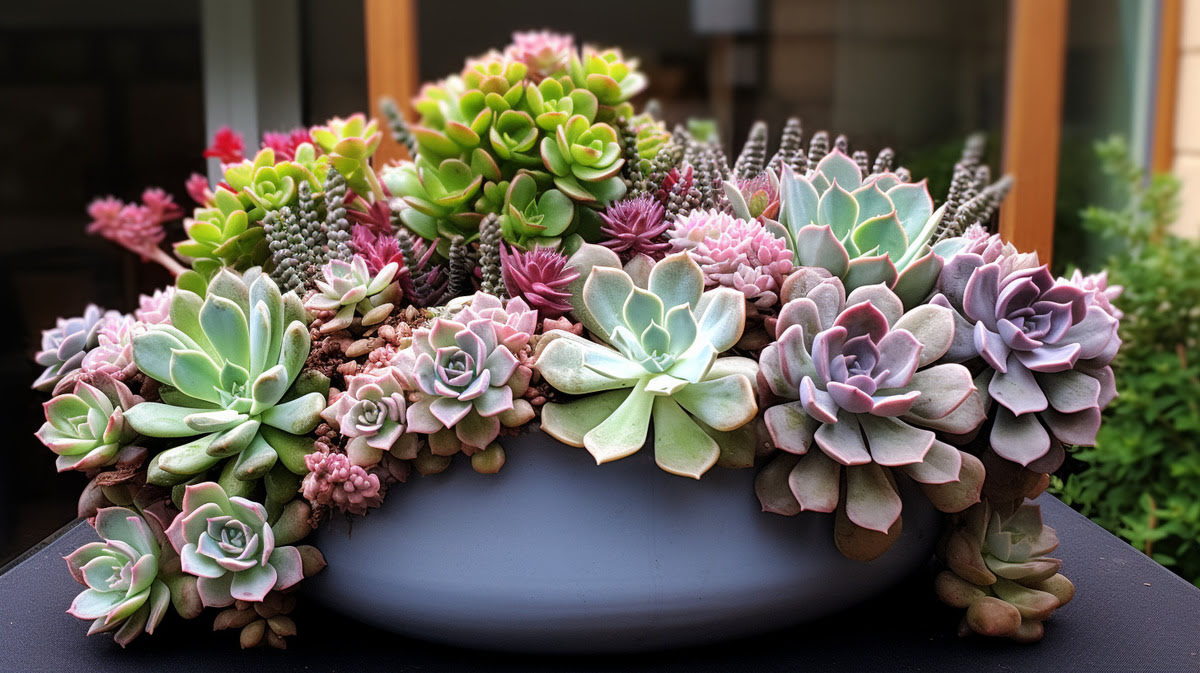Home>Types of Gardening>Edible Gardening>How To Grow Herbs In Winter
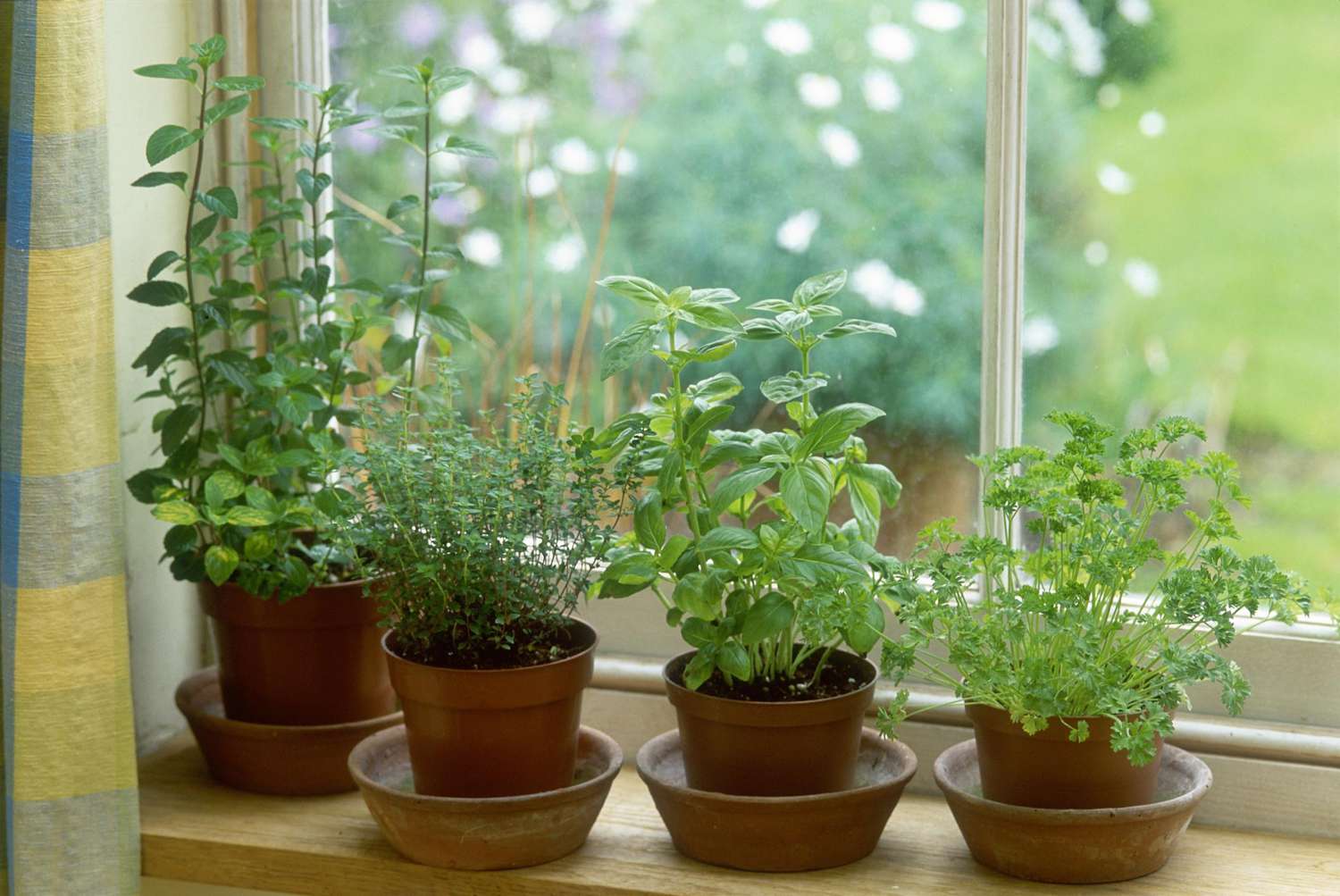

Edible Gardening
How To Grow Herbs In Winter
Modified: January 22, 2024
Learn how to continue your edible gardening journey even in the winter months by growing herbs indoors. Discover tips and tricks for successfully cultivating herbs during the colder seasons.
(Many of the links in this article redirect to a specific reviewed product. Your purchase of these products through affiliate links helps to generate commission for Chicagolandgardening.com, at no extra cost. Learn more)
Table of Contents
- Introduction
- Benefits of Growing Herbs in Winter
- Choosing the Right Herbs for Winter Growing
- Indoor Herb Growing Techniques
- Selecting the Ideal Containers for Winter Herb Gardening
- Providing Adequate Lighting for Indoor Herb Gardens
- Proper Watering and Temperature Control for Winter Herb Growing
- Maintaining Air Circulation and Humidity for Healthy Herbs
- Preventing Pests and Diseases in Winter Herb Gardens
- Harvesting and Using Fresh Herbs Throughout the Winter
- Conclusion
Introduction
Are you a passionate gardener who yearns for fresh herbs even during the chilly winter months? Well, you’re in luck! With the right techniques and a little bit of planning, you can easily grow herbs indoors and enjoy a bountiful harvest even when the snow is falling outside. Indoor herb gardening not only provides you with a convenient source of fresh herbs for cooking and medicinal purposes, but it also adds a touch of greenery and natural beauty to your home.
There are numerous benefits to growing herbs in winter. Firstly, it allows you to enjoy the vibrant flavors and aromas of fresh herbs all year round. No need to rely on store-bought dried herbs or jarred options that pale in comparison to the real thing. Secondly, growing herbs indoors during winter gives you the opportunity to experiment with a wider variety of herb species that may not thrive in your outdoor garden. Additionally, tending to an indoor garden can serve as a therapeutic and stress-relieving activity, especially in the cold and dreary winter months.
In this article, we will guide you through the process of growing herbs in winter. We will explore the different herbs that are well-suited for indoor gardening, discuss the best techniques for ensuring their optimal growth and health, and provide helpful tips for harvesting and utilizing fresh herbs throughout the winter season.
So, if you’re ready to embark on a winter herb gardening adventure, let’s get started and discover how to bring the vibrant beauty and flavors of nature indoors!
Benefits of Growing Herbs in Winter
Growing herbs in winter may require a bit of extra effort, but the rewards are well worth it. Here are some of the key benefits of having an indoor herb garden during the colder months:
- Fresh and Flavorful Herbs: When you grow herbs indoors, you have access to a continuous supply of fresh, aromatic herbs throughout the winter. No need to compromise on flavor by using dried herbs or buying from the store.
- Expanded Herb Selection: Some herb varieties thrive in cooler temperatures, making winter the perfect time to experiment with new flavors and types of herbs. You can explore herbs like rosemary, thyme, sage, and chives, which tend to thrive in indoor environments during winter.
- Convenience and Accessibility: Having herbs readily available in your own home means you can easily add a pinch of freshness to your winter cooking. No more last-minute trips to the store or settling for wilted herbs.
- Decorative and Aesthetically Pleasing: Indoor herb gardens not only provide a practical use but also add a touch of greenery and beauty to your home during the winter months when outdoor gardens may be dormant.
- Therapeutic and Stress-Relieving: Gardening is known to have therapeutic benefits, including reducing stress and promoting a sense of calm. Tending to your indoor herb garden can be a soothing and fulfilling activity, especially during the winter when outdoor gardening may not be possible.
- Improved Air Quality: Indoor plants, including herbs, contribute to cleaner air by absorbing toxins and releasing oxygen. This can be particularly beneficial during the winter months when the freshness of outdoor air is limited.
By growing herbs in winter, you not only ensure a steady supply of fresh and flavorful ingredients for your meals but also enhance your overall well-being and create an inviting indoor environment.
Choosing the Right Herbs for Winter Growing
When it comes to growing herbs indoors during the winter, selecting the right herbs is crucial for their success and vitality. While many herbs can thrive in indoor environments, some are better suited for the cooler temperatures and lower light conditions of the winter season. Here are some popular herbs that are ideal for winter growing:
- Rosemary: Known for its woody aroma and robust flavor, rosemary is a perfect herb for winter gardening. It thrives in cooler temperatures and requires minimal care.
- Thyme: With its delicate leaves and earthy fragrance, thyme is another fantastic choice for indoor winter gardening. It adapts well to indoor conditions and can withstand lower light levels.
- Sage: Sage is a hardy herb that can tolerate colder temperatures and low-light conditions. It adds a savory touch to dishes and has medicinal properties.
- Chives: Chives are a versatile herb that can be grown indoors during winter. They require moderate light and moisture and add a delightful onion-like flavor to dishes.
- Parsley: Parsley is a staple herb that can be grown indoors year-round. With its fresh, bright flavor, it is a valuable addition to any kitchen garden.
When choosing herbs for winter growing, consider their adaptability to indoor conditions, the amount of space they require, and your personal preferences in terms of flavors and uses. It’s also worth noting that it’s best to select varieties specifically labeled for indoor growing to ensure optimal success.
Whether you choose to grow one or multiple herbs indoors, remember that each herb has its own unique growth habits and requirements. Provide them with the right care, including proper lighting, watering, and temperature conditions, to help them thrive during the winter months.
Indoor Herb Growing Techniques
Growing herbs indoors during winter requires some special techniques to ensure their successful growth and development. Here are some essential techniques to keep in mind:
- Select the right location: Find a well-lit area in your home that receives at least 6-8 hours of sunlight per day. South-facing windows are ideal, as they provide the most sunlight. If sunlight is limited, you can supplement with artificial grow lights.
- Use quality potting soil: Choose a well-draining potting mix specifically formulated for indoor plants. Avoid using garden soil, as it may contain pests or diseases that can harm your herbs.
- Opt for appropriate container sizes: Select containers with drainage holes that are slightly larger than the root ball of your herbs. This allows room for growth while preventing waterlogged soil.
- Ensure proper drainage: Place a layer of small stones or gravel at the bottom of the containers to aid in drainage. This prevents water from accumulating at the roots and causing root rot.
- Regularly fertilize: Use an organic herb fertilizer or a balanced water-soluble fertilizer to provide essential nutrients to your herbs. Follow the recommended dosage and frequency based on the specific fertilizer you use.
- Prune regularly: Pruning helps promote bushier growth and prevents your herbs from becoming leggy. Trim off any yellow or dead leaves and regularly harvest the top growth to encourage new foliage.
- Rotate pots: Rotate your herb pots every few days to ensure even exposure to light. This prevents one side of the herb from leaning towards the light source and helps promote more balanced growth.
- Keep pests at bay: Monitor your herbs for signs of pests such as aphids or spider mites. Use natural pest control methods like neem oil or insecticidal soap to keep them in check.
By implementing these techniques, you can create a favorable environment for your herbs to thrive indoors during winter. Remember to observe and adjust your care routine based on the specific needs of each herb, as they may have varying requirements regarding water, light, and temperature.
Selecting the Ideal Containers for Winter Herb Gardening
Choosing the right containers for your indoor herb garden is essential to ensure healthy growth and to create an aesthetically pleasing display. Here are some tips for selecting the ideal containers for your winter herb gardening:
- Consider the size: Opt for containers that are large enough to accommodate the root system of your herbs. They should provide enough space for healthy growth without being too cramped.
- Choose containers with drainage holes: Proper drainage is crucial for preventing waterlogging and root rot. Look for containers that have drainage holes at the bottom to allow excess water to escape.
- Select materials wisely: Various materials can be used for herb containers, such as clay, ceramic, plastic, or fabric. Clay pots are porous and allow for better air circulation, but they can also dry out quickly. Plastic pots are lightweight and retain moisture well. Choose a material that suits your specific needs.
- Consider the style and design: Herb containers come in a variety of styles and designs, so select ones that complement your home decor and personal taste. You can choose sleek and modern containers or opt for a more rustic or vintage look.
- Think about portability: If you plan to move your herbs around to take advantage of sunlight or to rearrange your indoor space, consider using lightweight containers that are easy to lift and transport.
- Consider herb groupings: If you want to grow multiple herbs in the same container, ensure that they have similar growing requirements. For example, herbs like thyme, rosemary, and sage prefer drier soil, while basil and parsley like more moisture.
Remember that the ideal container will provide a suitable environment for your herbs to grow and thrive. It should have proper drainage and enough room for their root systems. Additionally, the container should complement your indoor space and align with your personal style preferences.
Lastly, don’t forget to label your containers to keep track of the different herbs you’re growing. This will prevent mix-ups and make it easier to care for each herb according to its specific needs.
Providing Adequate Lighting for Indoor Herb Gardens
Proper lighting is crucial for the successful growth of herbs in indoor gardens, especially during the winter months when natural sunlight is limited. Here are some tips for providing adequate lighting to ensure the health and vitality of your herbs:
- Utilize natural light: Place your herbs near a south-facing window where they can receive 6-8 hours of direct sunlight. This is the best source of natural light for your herbs, as it provides the full spectrum of light they need for photosynthesis.
- Supplement with grow lights: If natural light is insufficient, you can supplement it with artificial grow lights. LED or fluorescent lights specifically designed for plant growth provide the necessary wavelengths of light needed for photosynthesis. Position the lights 6-12 inches above your herbs and keep them on for 12-16 hours a day.
- Choose the right light intensity: Herbs generally require moderate to high light intensity for optimal growth. Different herbs have varying light requirements, so research the specific needs of each herb to ensure you provide the right amount of light.
- Ensure proper light distance: If using grow lights, adjust the height of the lights as your herbs grow to maintain an optimal distance. If the lights are too close, they can burn the leaves, while if they’re too far, the plants may stretch and become leggy.
- Rotate your herbs: To promote even growth, regularly rotate your herb pots so that all sides receive adequate light. This prevents the herbs from leaning towards the light source and encourages balanced development.
- Monitor for signs of inadequate lighting: If your herbs have pale or yellowing leaves, elongated stems, or appear weak and leggy, it may indicate insufficient light. Adjust the lighting conditions accordingly to prevent further damage.
Remember to find the balance between providing enough light without overwhelming your herbs. Keep in mind that different herbs have varying light requirements, so it’s important to research and cater to the specific needs of each herb you’re growing.
By ensuring that your indoor herb garden receives adequate lighting, whether through natural sunlight or artificial grow lights, you can promote healthy growth and vibrant foliage throughout the winter season.
Proper Watering and Temperature Control for Winter Herb Growing
Watering and temperature control are essential factors to consider when growing herbs indoors during the winter. Here are some guidelines to help you provide the right amount of water and maintain optimal temperature conditions for your winter herb garden:
- Watering:
- Check the moisture level of the soil regularly by inserting your finger about an inch deep into the soil. Water only when the top inch of the soil feels dry to the touch.
- Avoid overwatering, as excess moisture can lead to root rot. Ensure that the containers have drainage holes to allow excess water to escape.
- Use room-temperature water when watering your herbs. Cold water can shock and stress the plants.
- Water gently and evenly, ensuring that the water reaches the root system without causing excessive splashing or wetting the leaves. Wet leaves can promote fungal diseases.
- Temperature Control:
- Most herbs prefer temperatures between 60-70°F (15-21°C) during the day and slightly cooler temperatures at night. Ensure that your indoor environment provides these temperature ranges.
- Avoid placing your herbs near cold drafts or heating vents, as drastic temperature fluctuations can stress the plants.
- Monitor the humidity levels in your home. Indoor heating during winter can cause dry air, which may negatively impact your herbs. Increase humidity by using a humidifier, placing a tray of water near the plants, or misting the leaves with water.
- Keep in mind that some herbs, like rosemary and thyme, are more tolerant of cooler temperatures, while others, like basil and parsley, prefer warmer conditions. Adjust the temperature accordingly to meet the specific needs of your herbs.
By providing proper watering and temperature control, you can create a favorable environment for your herbs to thrive and ensure their overall health and vitality throughout the winter season.
Maintaining Air Circulation and Humidity for Healthy Herbs
Air circulation and humidity play vital roles in the health and well-being of herbs grown indoors during the winter. Proper airflow prevents the growth of mold and reduces the risk of disease, while maintaining optimal humidity levels helps to mimic the natural conditions that herbs thrive in. Here are some tips for maintaining good air circulation and humidity for healthy herbs:
- Provide Adequate Space: Ensure that your herbs are not overcrowded. Leave enough space between pots to allow for proper air circulation. Overcrowding can lead to reduced airflow and increased humidity, creating an ideal environment for mold and disease.
- Use a Fan: If your indoor space lacks natural air movement, use a small oscillating fan set on low to generate gentle airflow. The fan will help to circulate stagnant air and prevent the buildup of moisture around the herbs.
- Open Windows or Use Ventilation: When weather permits, crack open a window to introduce fresh air into the space. If this is not possible, use ventilation systems or exhaust fans to improve air circulation.
- Maintain Proper Humidity: Different herbs have varying humidity preferences. Generally, herb plants enjoy a humidity range of 40% to 60%.
- Use a Humidity Tray: Place a tray filled with water near your herb garden. As the water evaporates, it increases humidity around the plants. Be sure not to let the pots sit in the water to avoid waterlogging.
- Mist the Leaves: Mist your herb plants with a fine spray of water to replenish moisture and increase humidity levels. This is especially beneficial during dry winter months when indoor heating can cause low humidity.
- Avoid Overwatering: While it’s essential to maintain humidity, be cautious not to overwater your herbs. Overwatering can lead to waterlogged soil and create a breeding ground for fungal diseases.
- Monitor for Pest Infestation: Proper air circulation helps deter pests, but it’s still important to monitor your herbs for signs of infestation. Inspect the leaves regularly, and if pests are present, use organic pest control methods to keep them at bay.
By maintaining adequate air circulation and humidity levels, you create a healthier environment for your indoor herbs. The proper balance of air movement and humidity not only promotes their growth but also minimizes the risk of diseases, enhances the flavor of the herbs, and contributes to their overall well-being.
Preventing Pests and Diseases in Winter Herb Gardens
While growing herbs indoors during winter can help protect them from many outdoor pests and diseases, it’s still essential to take preventive measures to ensure the health and well-being of your herb garden. Here are some effective strategies to keep pests and diseases at bay:
- Start with Healthy Plants: When purchasing or propagating herbs, ensure that the plants are healthy and free from any signs of pests or diseases. Avoid bringing in any potential problems from the start.
- Promote Air Circulation: Good airflow helps prevent the buildup of moisture, which can attract pests and create a favorable environment for diseases. Keep your herb plants properly spaced, and use fans or open windows to maintain optimal air circulation.
- Check Regularly for Pests: Inspect your herb plants frequently for any signs of pests, such as aphids, whiteflies, or spider mites. Look for discolored leaves, stippling, sticky residue, or webbing. Early detection allows for prompt action.
- Use Organic Pest Control: In the event of a pest infestation, use organic pest control methods such as neem oil, insecticidal soap, or homemade sprays with ingredients like garlic or chili peppers. Follow the instructions carefully and apply treatments as necessary.
- Maintain Cleanliness: Keep your herb garden area clean and free from debris, fallen leaves, and dead plant matter. Regularly remove any weeds that may grow in the pots. This reduces hiding places for pests and minimizes the risk of diseases.
- Practice Proper Watering: Avoid overwatering your herbs, as soggy soil can promote the growth of molds and fungi. Ensure that your pots have drainage holes and water only when the top inch of the soil feels dry.
- Implement Crop Rotation: If you’re growing different herbs in the same area, practice crop rotation by moving your herbs to different spots. This helps prevent the buildup of pests and diseases that may target specific herbs.
- Quarantine New Plants: If you introduce new plants to your herb garden, isolate them for a few weeks to monitor for any signs of pests or diseases. This prevents the spread of potential problems to your existing herbs.
By following these preventive measures, you can reduce the risk of pest infestations and diseases in your winter herb garden. Regular monitoring, maintaining cleanliness, and prompt action when required will help keep your herbs healthy and thriving throughout the season.
Harvesting and Using Fresh Herbs Throughout the Winter
One of the joys of growing herbs indoors during the winter is having access to fresh and flavorful ingredients for your culinary creations. Here are some tips for harvesting and utilizing your herbs throughout the winter season:
- Harvesting Tips:
- Begin harvesting your herbs once they have grown to a height of at least 6 inches. This allows the plants to establish a strong root system before taking cuttings.
- To harvest, snip the outermost leaves or branches, starting from the top down. You can use sharp scissors or gardening shears for a clean cut.
- Harvest in the morning when the essential oils in the herbs are most concentrated. This ensures the best flavor and aroma.
- Only take about one-third of the plant’s growth at a time to avoid stunting its growth and vitality.
- Regularly pinch off any flowers that appear, as they can cause the herb to become bitter and affect the overall flavor.
- Utilizing Fresh Herbs:
- Use your freshly harvested herbs immediately to enjoy their peak flavor and fragrance.
- Incorporate herbs in a variety of dishes, such as soups, stews, salads, sauces, marinades, and teas.
- Experiment with different herb combinations to create your own unique flavor profiles.
- Preserve excess herbs by drying them or freezing them in ice cube trays with water or olive oil for easy portioning.
- Create homemade herb-infused oils or vinegars for added taste and versatility in your cooking.
- Replenishing Your Herbs:
- Allow your herbs time to recover and regrow after each harvest. This ensures continued production throughout the winter months.
- Ensure your herbs receive proper care, including adequate lighting, watering, and fertilization, to support their regrowth.
- Rotate your harvesting method, alternating between snipping individual leaves and taking larger cuttings, to promote a fuller and bushier growth habit.
By regularly harvesting and utilizing your fresh herbs, you can enjoy their vibrant flavors and aromatic qualities in your dishes all winter long. The process of harvesting and using herbs also helps to stimulate growth and ensures the continuous production of flavorful herbs throughout the season.
Conclusion
Growing herbs in winter is a rewarding endeavor that allows you to enjoy fresh flavors and elevate your culinary creations even during the cold months. By following the techniques and tips outlined in this article, you can successfully cultivate herbs indoors and maintain a thriving herb garden throughout the winter season.
From choosing the right herbs for winter growing to selecting the ideal containers, providing proper lighting, and maintaining optimal watering and temperature conditions, each step contributes to the overall success of your indoor herb garden. Additionally, ensuring adequate air circulation and humidity, as well as taking preventive measures against pests and diseases, plays a crucial role in maintaining the health and vitality of your herbs throughout their growth.
Harvesting your herbs in the morning, utilizing them immediately, and exploring a variety of culinary uses and preservation methods will enhance your meals and provide a constant source of flavorful herbs throughout winter. The ability to bring nature indoors not only ensures a fresh supply of herbs but also adds beauty and a touch of greenery to your home.
So, if you’re ready to embark on an edible gardening adventure even in the coldest months, gather your supplies, select your herbs, and create your indoor herb garden. With a little care and attention, you’ll be rewarded with a flourishing herb garden that brings joy and nourishment to your plates all winter long.


